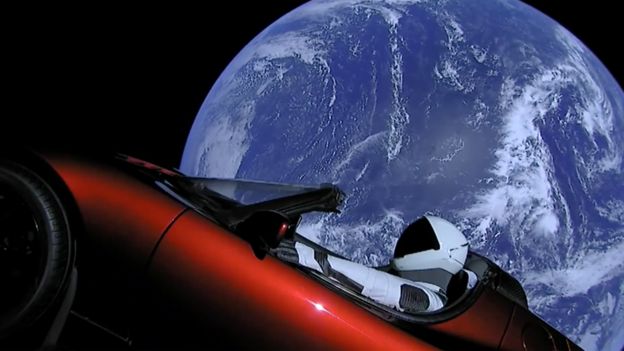
It is designed to deliver a maximum payload to low-Earth orbit of 64 tonnes - the equivalent of putting five London double-decker buses in space. Such performance is slightly more than double that of the world's next most powerful rocket, the Delta IV Heavy - but at one third of the cost, says Mr Musk.
- SpaceX rocket lights 27 engines
- Musk's Boring Company presents LA tunnel plan
- 'Approval' for hyperloop from New York to Philadelphia

The Tesla and its passenger have been despatched into an elliptical orbit around the Sun that reaches out as far as the Planet Mars. The Falcon Heavy is essentially three of SpaceX's workhorse Falcon 9 vehicles strapped together. And, as is the usual practice for SpaceX, all three boost stages - the lower segments of the rocket - returned to Earth to attempt controlled landings.
Two came back to touchdown zones on the Florida coast just south of Kennedy. Their landing legs made contact with the ground virtually at the same time. "That was epic," said Mr Musk. "That's probably the most exciting thing I've ever seen, literally." The third booster was due to settle on a drone ship stationed several hundred kilometres out at sea. Unfortunately, it was unable to slow its descent by re-igniting sufficient engines, missed the target vessel and was destroyed as it hit the water at some 500km/h. By then, the upper-stage of the Falcon Heavy, with its Tesla cargo, was heading on a trajectory that would hopefully take it towards Mars' orbit. That required the engine on the upper-stage to fire on three separate occasions, with the third and final ignition only occurring after a long cruise phase - something which was confirmed some six hours after the launch.





0 comments: